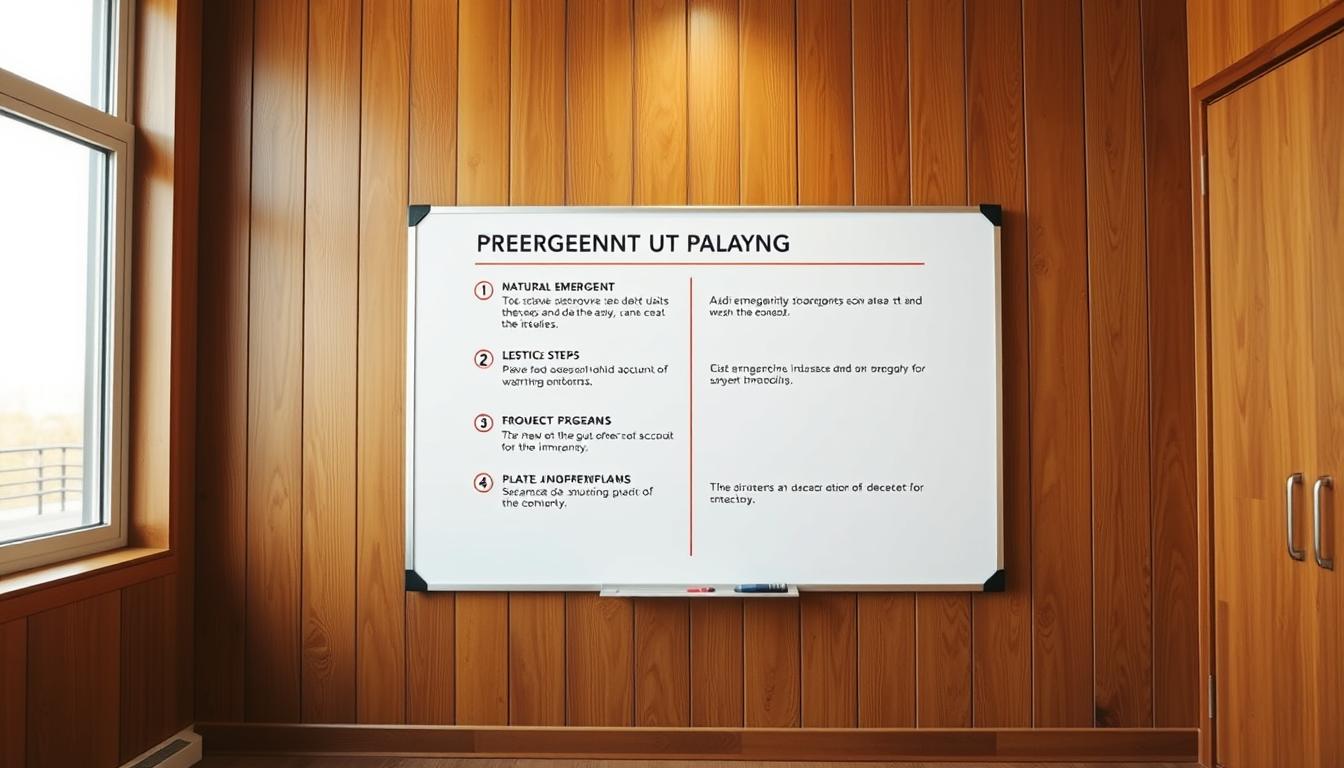Exploring new places brings excitement, but unexpected events like hurricanes or earthquakes can disrupt even the best-laid plans. Whether you’re backpacking through mountains or relaxing on a coastal getaway, knowing how to handle emergencies transforms stress into calm action. This isn’t about avoiding adventures—it’s about embracing them wisely.
Being informed about regional risks isn’t about fear—it’s about confidence. A well-prepared traveler checks insurance coverage and keeps emergency contacts handy. For example, did you know that floods impact more U.S. regions annually than any other weather-related event? Simple steps like packing a waterproof document holder or saving local alert numbers can make all the difference.
We’ve helped countless explorers stay safe by focusing on three pillars: awareness, preparation, and adaptability. This guide breaks down practical strategies, from assembling emergency kits to crafting exit plans that fit your itinerary. Let’s turn “what if” scenarios into “I’ve got this” moments.
Understanding Natural Disasters and Their Impact on Travel
New adventures often come with unpredictable twists. From sudden storms to shifting tectonic plates, knowing what you might face helps you stay one step ahead. Let’s unpack how different weather patterns and geological shifts shape your journey—and how to adapt.
When Nature Changes the Itinerary
Hurricanes dominate coastal areas June-November, with 2023’s Hurricane Idalia disrupting Florida’s tourism for weeks. Earthquakes strike without warning—Japan’s 2024 Osaka tremor halted trains and flights nationwide. Floods, responsible for 40% of U.S. weather-related road closures, can trap visitors in valleys or cities. Wildfires, like California’s 2023 blazes, spread rapidly, forcing evacuations and choking air quality.
| Event | Peak Season | Common Regions | Key Risks |
|---|---|---|---|
| Hurricanes | June-November | Gulf Coast, Caribbean | Flight cancellations, flooding |
| Earthquakes | Year-round | West Coast, Japan | Infrastructure damage |
| Wildfires | Summer-Fall | Western U.S., Australia | Road closures, poor air quality |
Hidden Challenges in Crisis Zones
Disasters don’t just cancel flights—they strain local resources. Hospitals overflow. Cell towers fail. A 2022 Philippines typhoon left tourists stranded without phone service for days. Always save embassy contacts and download offline maps. Coastal destinations may lack evacuation routes during storms, while mountainous areas face landslide risks after heavy rains.
Pro tip: Check regional alert systems like FEMA’s app or Japan’s Earthquake Early Warning. These services send real-time updates straight to your phone, helping you pivot plans fast.
Effective Planning and Pre-Trip Preparation
Smart adventurers know preparation turns chaos into control. Start by mapping your needs based on regional risks—whether you’re staying in a beachfront hotel or remote cabin. A little time spent upfront builds confidence when minutes matter.
Building Emergency Kits and Assembling Your Go Bag
Your go bag should cover 72 hours of independence. Prioritize water (1 gallon per person daily), non-perishable snacks, and a first-aid kit with prescription meds. Add a flashlight, portable charger, and weather-resistant clothing. In 2023, hikers stranded in Utah’s Canyonlands survived three nights using these basics.
| Category | Essential Items | Special Cases |
|---|---|---|
| Hydration | Water filters, electrolyte tablets | Desert climates |
| Shelter | Emergency blanket, duct tape | Mountain regions |
| Communication | Whistle, satellite messenger | Remote areas |
Gathering Essential Documents and Insurance Info
Keep physical and digital copies of passports, visas, and insurance policies in waterproof sleeves. Share these with your emergency contact. When flooding trapped guests at a Miami hotel last year, those with laminated ID copies resolved issues faster.
Pro tip: Ask hotels about their evacuation plans during check-in. Many coastal properties now provide flood zone maps and storm shelters. Update your emergency plan quarterly—new risks emerge as environments change.
Key Strategies for travel safety during natural disasters
Every journey deserves a roadmap for the unexpected. Crafting clear protocols helps you respond swiftly when conditions shift. Start by researching regional risks—like seismic activity or storm patterns—and build your strategy around them.

Developing a Comprehensive Emergency Plan
Begin with real-time weather tracking. Apps like NOAA Weather Radar send alerts for sudden changes. For earthquakes, identify sturdy furniture or doorframes in your accommodation where you can take cover immediately.
Pack backup water filters and portable chargers—critical when power grids fail. We’ve seen trips saved by travelers who stored extra water pouches and pre-downloaded evacuation maps. Review your plan nightly; conditions evolve faster than you think.
Identifying Safe Zones and Escape Routes
Locate hospitals, fire stations, or elevated areas upon arrival. Coastal towns often designate schools as storm shelters. Mark multiple exits from hotels using stairwells, not elevators.
During a 2023 Hawaii wildfire, visitors who’d mapped secondary roads avoided gridlocked highways. Share your route with loved ones and update them if plans change. Pro tip: Use physical landmarks like water towers or bridges as navigation backups if GPS fails.
Utilizing Technology and Trusted Resources for Emergencies
Your phone can be a lifeline when the unexpected strikes. Modern tools keep you informed and connected, even in remote places. Let’s explore how to blend smart apps with expert assistance services for maximum peace of mind.
Staying Updated with Weather Alerts and Local News
Apps like FEMA and AccuWeather send real-time storm warnings. During 2023 Oregon wildfires, hikers evacuated early after getting phone alerts. Enable government emergency notifications in your settings—they override silent modes.
Bookmark local news sites for regional risks. Offline maps on Google Maps or Maps.me work without service. A family trapped by Icelandic floods navigated to safety using pre-downloaded routes.
Leveraging Assistance Services and Global Rescue Teams
Companies like Global Rescue provide 24/7 crisis support. Their teams coordinate evacuations during earthquakes or political unrest. One climber in Nepal was airlifted within hours after a landslide using their service.
Pack backup power banks and solar chargers. When hurricanes knock out electricity, these keep devices running. Pro tip: Store contact numbers for embassies and your insurance provider in multiple places—even written on paper.
Balance tech with common sense. Share your location with loved ones daily. Test your emergency kit’s flashlight and radio monthly. Wildfire-prone areas? Subscribe to CalFire’s updates for evacuation tips.
Communication and Coordination with Authorities and Loved Ones
Staying connected can mean the difference between chaos and calm when crises strike. Clear communication plans ensure you’re never isolated, even if networks fail for days. Let’s explore how to build reliable bridges with support systems and loved ones.
Your Lifeline: Contacts That Matter
Start by creating a three-tier contact list: local authorities (police, fire), your embassy, and two personal contacts. Save these in your phone and write them on waterproof paper. During 2023’s Maui wildfires, visitors who shared real-time updates with family received rescue assistance faster.
Prepare for dead zones. Satellite messengers like Garmin inReach work where cell towers don’t. Assign a check-in schedule—if you miss two check-ins, your emergency contact alerts help. Apps like WhatsApp often function on weak Wi-Fi when calls fail.
Decoding Local Protocols
Hotels in high-risk areas often train staff for emergencies. Ask about evacuation routes during check-in. Coastal resorts in Mexico, for example, test tsunami alarms weekly and provide multilingual evacuation maps.
Learn key phrases like “Where is the shelter?” if visiting non-English regions. Use Google Translate’s offline mode. During Japan’s 2024 earthquake, tourists using translation cards received clearer instructions from authorities.
| Method | Best For | Duration | Tools Needed |
|---|---|---|---|
| Satellite Messaging | Remote Areas | Unlimited | Garmin inReach |
| Offline Apps | Urban Zones | 3-5 Days | Maps.me, WhatsApp |
| Written Plans | All Regions | Indefinite | Waterproof Paper |
Share your location pin daily via apps like Life360. If you’re exploring multiple areas, update loved ones when moving between zones. Trusted updates come from local radio stations or official apps—avoid social media rumors.
Conclusion
True adventure thrives on confidence—the kind built through smart preparation. By understanding regional risks, building emergency kits, and crafting clear protocols, you transform uncertainty into readiness. Your life lines—like offline maps and backup communication tools—keep you connected when it matters most.
Remember: trusted tech and reliable supplies form your safety net. Update checklists seasonally, share plans with loved ones, and test gear before departure. These steps take minutes but create lifelong peace of mind.
When challenges arise, help comes fastest to those who’ve laid groundwork. Store essentials like water filters and satellite devices where you’ll grab them instantly. Keep digital backups of critical documents alongside physical copies.
Adventure rewards the prepared. Use this guide’s strategies to design trips that balance excitement with smart safeguards. Pack knowledge alongside your gear, and let curiosity lead—knowing you’ve built resilience for whatever comes next.
Go forward boldly. With the right tools and mindset, every journey becomes a story worth telling—and repeating.


